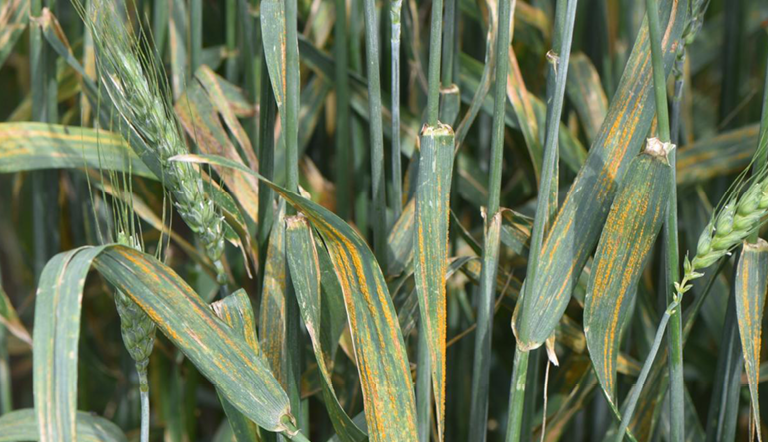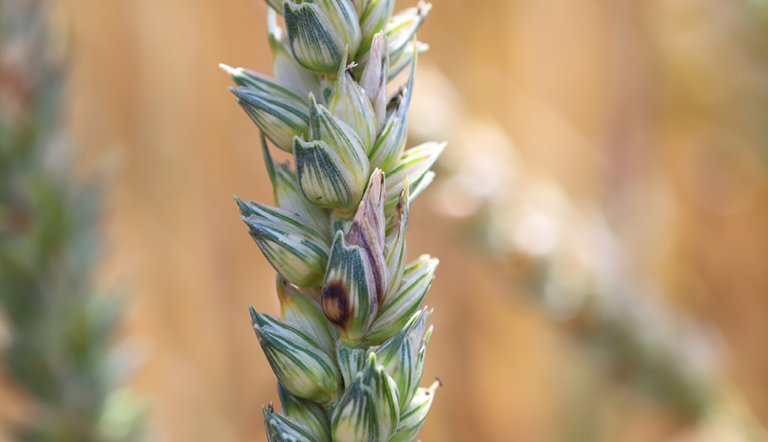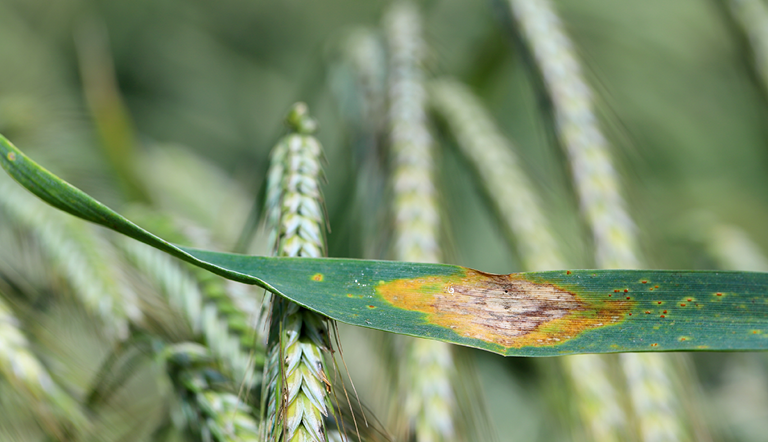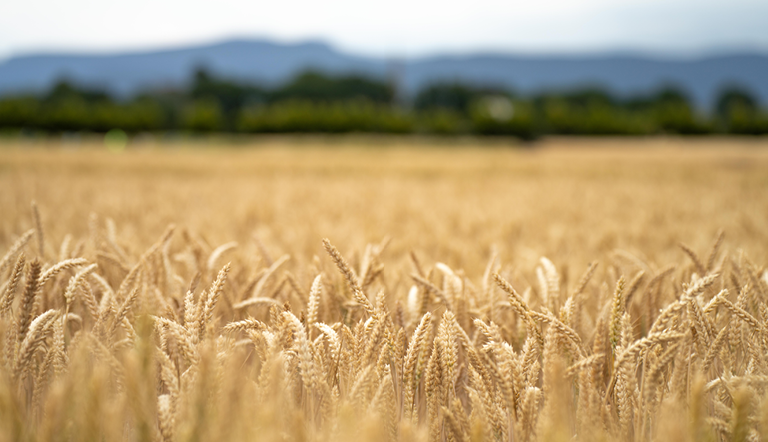
Controlling Septoria leaf blotch/glume blotch in wheat

Septoria leaf blotch/glume blotch (Stagonospora nodorum ex Septoria nodorum) is a pathogen which causes disease in wheat plants that can be difficult to control due to resistance to multiple fungicides.
It can cause devastating crop losses, with about two percent of wheat crops globally reportedly destroyed by Septoria leaf blotch diseases every year. The pathogen can reduce seed set and cause the shrivelled grain to be lost with the chaff during harvest time. The most significant losses take place when the infection sets in before heading.
Conditions that lead to glume blotch
Septoria leaf blotch is more common in regions with wet and windy conditions during the growing season. The disease also occurs where crops are planted densely and where they receive large amounts of fertiliser. Various different Septoria diseases can be present simultaneously on individual plants in the wheat fields. These different diseases can be hard to identify without examining the fruiting bodies and spore morphologies microscopically.
Symptoms – and how to recognise Stagonospora nodorum
In plants infected by (Stagonospora nodorum, the fungus causes oval lesions to appear on the leaves, which then join together to form larger areas of necrotic tissue. The lesions are commonly surrounded by a yellow chlorotic halo, and the black pycnidia or fruiting bodies which develop on the infected lesion cannot be seen. During lengthy periods of wet weather, the pycnidia of Stagonospora nodorum produce numerous pink spores. The leaf blotch lesions start off on the lower leaves of the wheat plant and, if environmental conditions are favourable, they spread to the upper leaves. The pathogens are able to survive during the non-crop season on cereal stubble, as well as debris and volunteer plants.
Kernels produced from leaves that die before the end of grain filling will be shrivelled.
How glume blotch develops
The Stagonospora nodorum pathogen becomes increasingly aggressive as the wheat crop develops, and starts to infect the nodes and glumes of the plants The glume blotch infection first appears at the tips of the glumes and lemas, then develops across the glume, showing a brown lower border. The disease moves downward, and a grey discolouration then replaces the lower brown border. The fruiting bodies (pycnidia) can develop within these lesions.
How to manage Septoria glume blotch
When growing wheat, an integrated approach is required to manage Septoria leaf blotch. This includes a careful cultivar selection (look for wheat varieties that are resistant to leaf blotch and have good yield potential).
Adopt good cultural practices: cut down stubble and weeds etc, and rotate wheat crops regularly to stop the carry over of the disease from season to season.
Be careful when disposing of contaminated crop debris since the pathogen survives on infected leaves. An effective measure to dispose of contaminated crop debris is to burn it or plough it into the soil.
Although genetic resistance is a vital measure for controlling the pathogen, many South African cultivars still succumb to Septoria diseases.
To limit financial losses from leaf blotch, it is important for farmers to monitor their wheatlands regularly and to familiarise themselves with the symptoms of wheat diseases so they can make an accurate diagnosis and manage the disease optimally. They should start monitoring their plants at the seven-leaf stage, at which seven fully unfolded leaves have appeared on the main stem of the plant. If infection occurs, they should continually monitor and assess the progress of the disease during the season.
When necessary, make use of chemicals, keeping in mind the climatic conditions as well as the resistance levels of the cultivar. Always follow protocols and beware of over-application of fungicide as this could reduce the disease’s resistance to fungicides
Some fungicides can be successfully applied to seeds and help suppress early infection, but the timing of application is crucial for effective disease control.
ADAMA’s crop protection solution for glume blotch in wheat
ADAMA’s Custodia® 320 SC (Reg. no. L9342 Act/Wet no. 36 of/van 1947) is a suspension concentrate fungicide with systemic, translaminar and contact action for the registered control glume blotch (Septoria nodorum) and powdery mildew (Blumeria graminis)
on wheat, as well as the listed diseases in barley, black wattle, grain sorghum, maize, sweet corn, soybeans and wine grapes. Its active ingredients are azoxystrobin (strobilurin) and tebuconazole (triazole).
When using it for wheat crops, it should be applied at least 70 days before harvest or feeding.
The local maximum residue levels (MRSs) will not be exceeded if Custodia® is used according to the label instructions. Warnings to take note of include that Custodia® is harmful if swallowed, may damage fertility or the unborn child, and is very toxic to aquatic life with lasting effects. Avoid release to the environment and collect spillage.
Important to remember
With any chemical, and in terms of ADAMA’s regulations, always read the label before use. Take note of signal words and hazard statements on the labelling. ADAMA complies with the Regulations Relating to Agriculture Remedies (promulgated on 25 August 2023) under the Fertilisers, Farm Feeds, Agricultural Remedies and Stock Remedies Act, 1947 (Act 36 of 1947); and always provides the correct names of active ingredients in its products.
ADAMA South Africa (Pty) Ltd
Ground Floor, Simeka House
The Vineyard Office Estate
99 Jip de Jager Drive
Belville, 7530
infocpt@adama.com
References:
https://www.arc.agric.za/arc-sgi/Pages/Crop%20Protection/Small-Grain-Diseases.aspx
https://www.farmersweekly.co.za/crops/field-crops/wheat-producers-treat-fungicides-with-caution/




